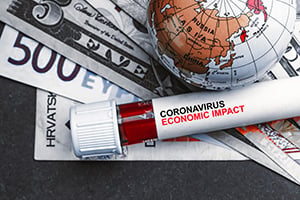 With the start of COVID vaccinations and signs that the third wave may be peaking, I have been thinking a lot about what the new normal will look like—and what it will mean for us as investors. We are not there yet, of course. But we can see the end of the pandemic in the not-too-distant future. Markets are already there, but markets tend to have a ready-fire-aim approach. So, there is still an opportunity to be thoughtful. Let’s walk through what the new normal might look like.
With the start of COVID vaccinations and signs that the third wave may be peaking, I have been thinking a lot about what the new normal will look like—and what it will mean for us as investors. We are not there yet, of course. But we can see the end of the pandemic in the not-too-distant future. Markets are already there, but markets tend to have a ready-fire-aim approach. So, there is still an opportunity to be thoughtful. Let’s walk through what the new normal might look like.
Biotech Model Validated
The biggest story of this pandemic is how quickly the vaccines were created. This gets mentioned, but it is hard to really understand just what an accomplishment it has been. Historically, vaccines took decades and often never appeared at all. There is still no vaccine for AIDS, for example. Making it even more extraordinary is the fact that we got two safe and effective vaccines using technologies that had never been applied to the problem before. This accomplishment is great in the present situation, but the new normal implications are profound. Diseases can now be modeled and potentially treated much more quickly. The biotech model has now been validated, and we can expect to see new treatments come to market more quickly for a wide range of ailments.
The Way We Work
Just as new technology has changed the way we do medicine, the pandemic has also changed the way we work. Decades ago, the internet was going to make distance irrelevant and break the tie between where we live and where we work. Well, it just happened. Every office worker is now thinking about whether they want to go back to the office. Every company in the U.S. is now looking at how and even whether they want those employees back in the office. Everyone seems to be asking, “If I didn’t live/work here, would I choose to?” And if not, why not move?
The new normal will have areas competing on quality of life more than existing concentrations of business. Wall Street firms are looking at Florida. Tech firms are looking at Texas. The economic geography of the country will change more in the next five years than it has in the past couple of decades, to the benefit of both workers and companies.
A Return of Leisure
Leisure will come back to life. One thing that won’t change will be people’s desire to get out and be with other people. Live music will come back, and so will restaurants. In fact, although people will be more careful, they will also be more appreciative—and likely willing and able to spend more. Ditto for travel. My own family cancelled trips this year, but we will catch up on them (hopefully!) next year. Commonwealth had to cancel trips, but we are planning them for next year. Businesses that have been written off will be back as soon as they safely can be. Just as things we have to do (e.g., medicine and work) will get better, things we want to do will be back in full force. Positive changes all around.
The Common Denominator
The common denominator here, between what changes and what stays the same, is that post-pandemic life will be better in many ways. Health care and treatments now have a proven model for fast innovation, which should change how we develop and deliver treatments. People’s work lives are in many respects better now than they were pre-pandemic, as most have no desire to return to the office full-time, and they will get even better as offices open again for those who want to return. Entertainment options, which multiplied online, will be available in real life again. The new normal will not only be good, but better.
Businesses will see the same differential. Companies have become more productive during the pandemic. They have learned to do more with less in many cases. They have learned their employees can be effective remotely, which opens up multiple possibilities. Right now, companies are just starting to realize their options, but that will expand over the next couple of years, to everyone’s benefit.
What Does This Mean for Investments?
What this means for our investments is that the economy will still grow—likely faster—in the new normal. Workers and companies will have more positive options. Technology will continue to make life better across the board, even as we benefit from the reopening.
Will there be problems? Of course, especially over the next couple of months. But just imagine if everything we have learned and accomplished over the past nine months is added to a reopened economy, because that is where we are headed. The new normal is coming. It will not just be normal, but better.


 Print
Print

